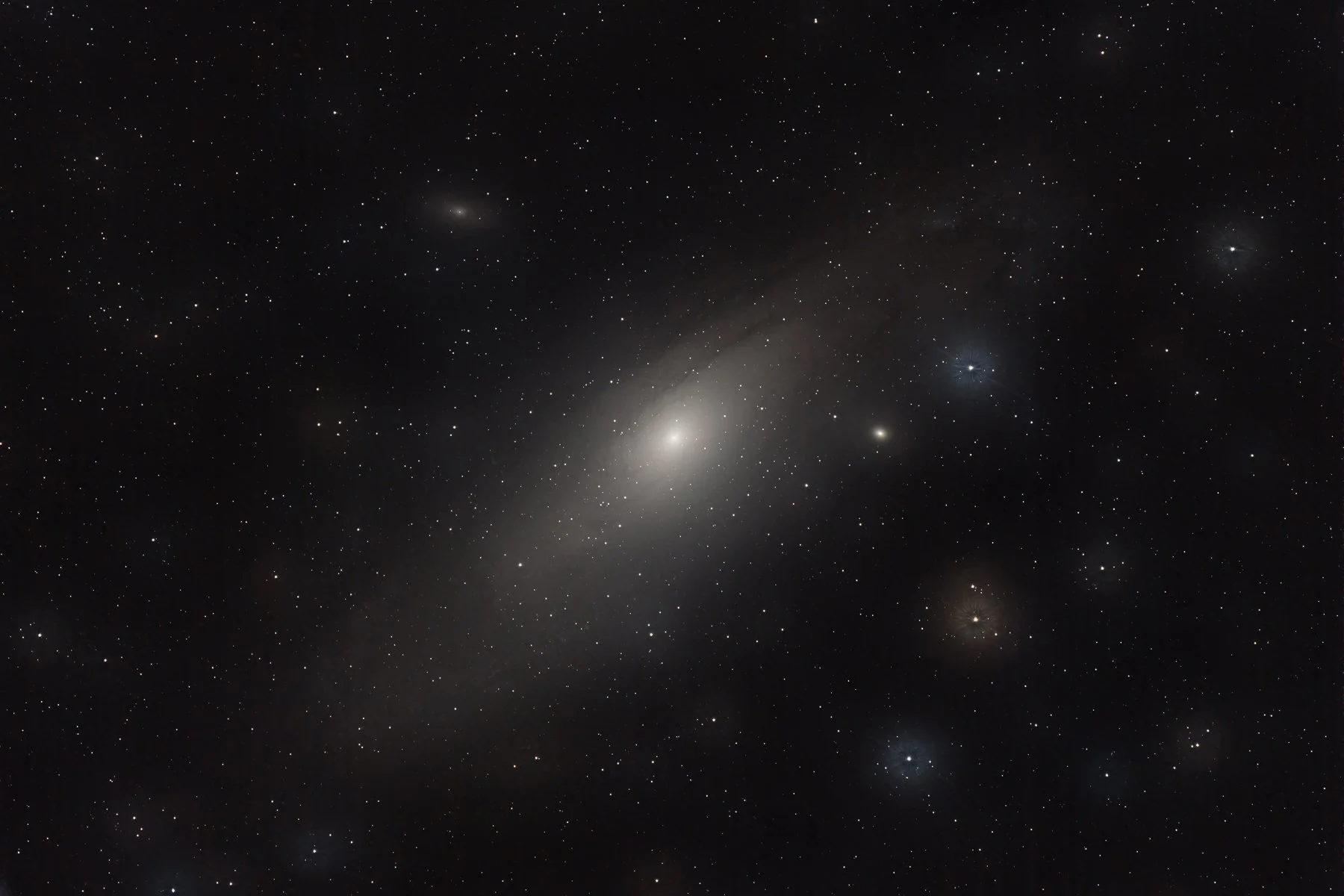M31 - Andromeda Galaxy
Type: Barred Spiral Galaxy
Discoverer: Al Sufi, 964, considered rediscovered by Gunzenhausen, 1612
Size: 160,000 ly
Distance: 2.59 ly
Constellation: Andromeda
My Notes: Andromeda is huge and one of the easiest deep sky objects to see and photograph. When I captured it, I recall having an absolute rock solid lock with my star tracker. I also had the galaxy directly in the middle of my camera frame which means there is a very low amount of distortion. The marking cross was exactly in the middle of the target circle. Andromeda was set to be in the sky for the entire night giving me hours of capture time, however, the fact that I was using a photography lens bit me. After 15 images, my lens was pointing nearly vertical. It doesn’t have a zoom lock and so the weight of the lens caused the whole thing to “zoom” out to 143mm. I didn’t think to check the position of the zoom when I verified the photos were still being taken and so that’s why I have a photo below at 143mm. I should have given more thought to the direction of my camera though because at 400mm, the galaxy is almost too large for the vertical axis of my frame. It would have been better to rotate 90 degrees to allow it to fill up the width of the photo. There is much more detail to be captured and I plan to come back to it again in the future. Also in the photos are the M110 Dwarf Galaxy and M32 Dwarf Galaxy.
Gunzenhausen Notes: “looks like a candle flame seen through transparent horn. No stars can be seen, only glimmering rays which are brighter closer to the center.”
Messier Notes: “The beautiful nebula of the belt of Andromeda, shaped like a spindle; M. Messier has investigated it with different instruments, & he didn't recognise a star: it resembles two cones or pyramides of light, opposed at their bases, the axes of which are in direction NW-SE; the two points of light or the apices are about 40 arc minutes apart; the common base of the pyramids is about 15. I have employed different instruments, especially an excellent Gregorian telescope of 30 feet FL, the large mirror 6 inches in diameter, magnification 104x. The center of this nebula appears fairly clear in this instrument without any stars appearing. The light gradually diminishes until it becomes extinguished. The former measurements were made with a Newtonian telescope of 4.5 feet FL, provided with a silk thread micrometer. Diameter 40'. August 3, 1764.” [This galaxy was wrongly labeled as a nebula, since everything was classified as either a nebula or a star cluster.]
M31 historical drawing of core
15 frames at 100 sec Mean Algorithm ISO-800 f/5.6 400mm (560 FF equiv.)
25 frames at 100 sec Mean Algorithm ISO-800 f/5.6 143mm (200 FF equiv.)
My first ever capture of a deep sky object and I did it with the Pixel 3 Phone's astrophotography mode
Taken on 08/26/2024. Edited in Siril - 75 frames at 25 sec (00:30:50 total exposure) ISO 3200 f6.3 800mm - Nikon Z8 Nikkor 800 f/6.3. For more info see M32





